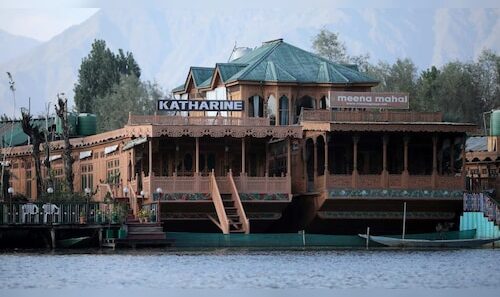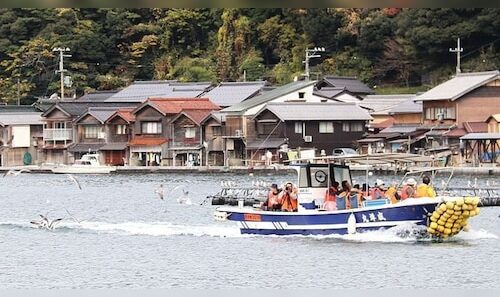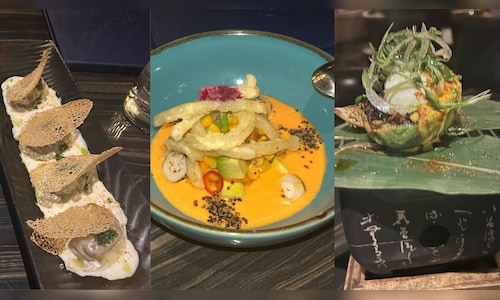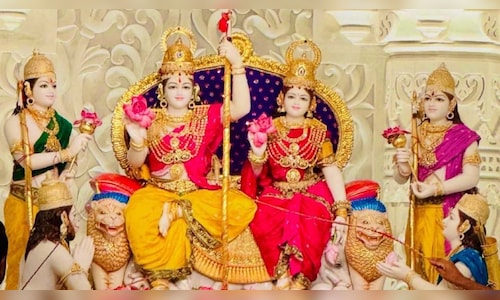“Peruvian culture forms my foundation, while Japanese culture became a philosophy I adopted when I began my culinary journey. Nikkei cuisine serves as a bridge where both cultures coexist, and I find myself at the intersection, honoring and reinterpreting them in each dish,” shares Chef Lan Thorne, Chef de Cuisine at Koishii.
Nikkei cuisine is a fusion born at the crossroads of Japanese tradition and Peruvian components. “Key ingredients include fresh fish, yellow chilli peppers, limo chilli peppers, rocoto chilli peppers, panca chilli peppers, quinoa, alongside Japanese staples such as soy, miso, and dashi. This blend allows us to craft dishes that honor Japanese techniques while bursting with the vibrant flavors of Peru,” he continues.
Operating under the concept of “contemporary Nikkei,” Koishii reinterprets this cuisine using local ingredients from India while also incorporating elements from Japan and Peru.
“For instance, we import chilli peppers directly from Peru to retain authentic flavors, but we also integrate local spices and fresh produce that enhance our offerings. It’s a delicate balance — honoring the Nikkei heritage while welcoming influences from the local environment, which makes Koishii unique,” Chef Thorne explains.

Koishii recently updated its menu, adding exciting options like Ahiru Gyoa, Truffle Quinoa Gyoza, Mango Ceviche, Tropical Salmon, Smoked Rocoto Ceviche, Shishito Tempura, Gunkan Furai, Softshell Crab Maki Rolls, Avocado Brasa, Shromi Amazonico, Peruvian BBQ Chilean Sea Bass, Panco Miso Black Cod Yakitori, Tallarin Saltado Criollo, Parma Tiradito, Sake Tiradito, among others. Noteworthy dessert additions include Suspiro A La Limena and Rocotto Chocolate Fondant.
By weaving together Peruvian ingredients, Japanese traditions, and Indian produce and spices, Koishii has redefined classic Nikkei cuisine, creating a tri-cultural dialogue.

Chef Thorne remarks that the menu development took several months of trial and refinement. A significant challenge was to honor the essence of Nikkei cuisine while adapting it for Indian tastes, which feature a rich and intricate culinary landscape. “Adjusting to the Indian palate involved striking a balance. For example, I adjusted the acidity in some dishes, toned down the spiciness in others, and emphasized umami and sweet flavors. I also utilized fresh local produce in accordance with seasonal availability, exploring typical Indian ingredients,” he explains.
The Nikkei Ceviche exemplifies this fusion, crafted with hints of yuzu ponzu, tamarind, and tiger’s milk. “The Indian tamarind adds a unique acidity and sweetness that perfectly balances the Japanese ponzu and the classic Peruvian tiger’s milk,” he shares.

Chef Thorne believes that contemporary Nikkei must continually evolve, innovating while preserving its roots and narrating stories through each dish. “This is my daily objective at Koishii and in every project I partake in — to honor the past, thrive in the present, and pave the path for the future of Nikkei cuisine,” he concludes.
The tiger’s milk, or Leche de tigre, refers to the lime marinade utilized in preparing ceviche.

When Chef Thorne embarked on his culinary journey two decades ago, Nikkei cuisine was still an emerging notion outside of Peru. While sushi and a few traditional Peruvian dishes were recognized, the fusion of these two cultures wasn’t widely explored at that time. He notes that flavors were more straightforward and traditional — ceviche, tiradito, sushi with Peruvian influences — and aimed to establish a unique identity within the culinary world.
“Nowadays, Nikkei cuisine has transformed into a more modern and global framework. It has evolved beyond mere fusion to become its distinctive language. Contemporary cooking techniques, fermentation, and fish aging are now being incorporated, along with influences from other cuisines such as Amazonian and Mediterranean. Contemporary Nikkei not only honors Japan and Peru; it also adapts and interacts with local ingredients from various regions while preserving its core essence,” he adds.
Also Read: This Mumbai restaurant expands its Italian roots with wider Mediterranean flavours

















